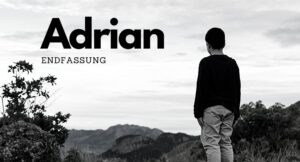I wasn’t in Kansas anymore. Well, I have never been to Kansas, but you get my point. This place definitely was outside the Western hemisphere. As I stepped out of the airport, I was dazzled. By brightly colored gowns on ebony skin. By friendly faces with radiant smiles. And by a sky of a blue brilliance that was novel to me and put a sense of summer vacation in my soul. They don’t lie when they tell you the African sky is big. It really was bigger than expected. Where I come from, the sky is only what you see when you look straight up. A little blue square peeping through the towering buildings. On most days this little square isn’t even blue but grey and cloudy and makes you rather look at your feet instead. Anyways, I wasn’t here on holiday. Dragging my large suitcase to the place where the rental cars parked, I looked rather warily at the people I passed. I half expected them to ask me for money, because I was white and they were not and how were they supposed to know I didn’t have any? Nobody asked, though, which came as a surprise. As was the fact that nobody seemed to take any notice of my arrival. I didn’t know how to feel about that. Relieved? Offended?
During my time in Egypt—I had lived there for two years—I couldn’t get out of my house without being bothered. There, I hadn’t been able to hide the fact that I was a foreigner. The color of my skin betrayed me. Back then, I understood what being different really meant. For the first time in my life I hadn’t been able to disappear in the crowd. On the streets, I stood out and all the others saw was the stereotype of a white person. A stereotype that was all true in the big picture, but all wrong in the details.
In the crowd at the Cape Town International Airport, I saw a white dude waiting. His face was weathered from the sun. He wore short pants and a flashy shirt no man would ever dare to wear in my home town. It was right then that it dawned on me: Although the South Africans looked foreign to me, I didn’t look foreign to them. As long as I kept my mouth shut, I might even be one of them. This realization made me feel as if I somehow belonged, and I instantly moved a little more freely.
It took me a while to figure out what was wrong with the place. On the streets, non-white people usually didn’t talk to me. No friendly chats. No greetings. The big smiles of the locals—exposing a row of mysteriously missing front teeth—were never meant for me. So day in, day out, I walked in solitude on the dusty roads to university, along the fences of beautiful houses with gardens that seemed too green for the climate. At least in the street where I lived (named after Paul Kruger, a South African president of German decent), all those houses belonged to white people. Except for the church at the end of the road, in which no white person ever set a foot. They had a different church somewhere else, in the better part of town. Although the houses in my street seemed very beautiful to me, my part of the town was actually considered the bad part due to its closeness to the township. In the nice houses’ gardens, people of color were trimming the grass. Dogs barked angrily at me. They lived in the gardens, trained to protect. Maybe it was their imprisonment that made them angry. Seldom did I see the owners walk their dogs. So they ran up and down the fences, barking and growling. Resenting people in general. I knew they’d never see the other side of this fences—unless by accident when somebody’d leave open the heavy gates and they’d escape until a speeding car would put an end to their newly found freedom.
I felt a strange kind of loneliness spreading inside of me. The kind you have in a crowd to whom you do not matter. It felt like being shunned. Only in the shops was some friendly chitchat. But there, it was the staff talking to me—and I was sure they only talked to me because they considered it part of their job.
I learned that there was a rainbow of skin colors. It wasn’t only “Blacks” and “Whites” but a lot of “Coloreds” in between. For the first time ever, I had to put the color of my skin on an official form. It didn’t need the bars in front of my dorm room’s window to make me feel like I was in prison. Them being there—being everywhere—only made it more obvious. Everything was fenced in. Nature, people, minds. There was a general mistrust towards white people. There was a general mistrust towards black people. There was a lot of tension everywhere. It was dense. It had substance. It might have been an independent being living right there next to all of us.
And I, I was trapped in the middle. It dawned on me that they really thought I belonged here, that I was one of the former oppressors. How were they supposed to know that I had nothing to do with what had happened during apartheid? I, the unsuspected stranger, was considered one of the bad guys. But wasn’t I? The old stereotype crept back at me, enwrapped me. A stereotype that was all wrong in the details, but all true in the big picture.
Anmerkung
Dieser Text ist Ergebnis der Schreibübung: Fremde Welten. Sie stammt aus dem Modul “The Craft of Setting” und ist Teil der Spezialisierung: Creative Writing.






